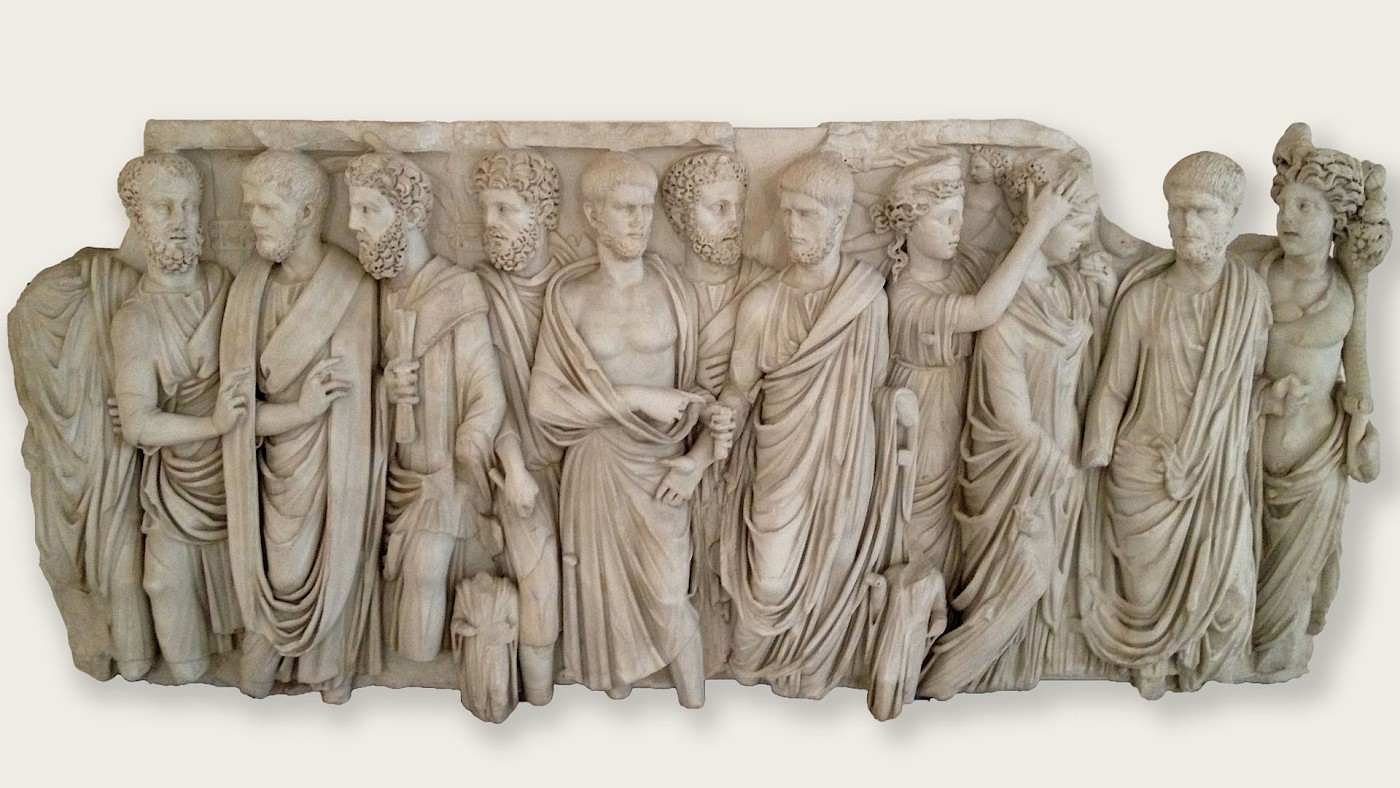One of the great things about Roman imperial sculpture is that you can often date it, at least generally, by looking at the hairstyles of the human figures. The photo that serves as this article’s featured image depicts part of the so-called “Sarcophagus of the Brothers”, currently in the National Archaeological Museum of Naples (inv. 6603).
This surviving part of the sarcophagus measures 257 cm in length and is 117 cm tall. It depicts a large number of men in togas and, towards the right, a few women. The men have full beards that are curly, like the hair on the top of their heads. This male hairstyle came into vogue during the reign of the emperor Marcus Aurelius (r. AD 161–180). But the use of drills to bore holes into the stone to better accentuate the curls is a feature of the age of the Severans (AD 193–235) and later.
Part of the Farnese Collection
This relief was originally part of the Farnese Collection, named after Cardinal Alessandro Farnese, who lived in the sixteenth century and eventually became Pope Paul III (1543–1549).
Unlike today, excavations back then weren’t conducted in a scientific way, so we don’t know precisely where this object was found and in what context. Dated purely by style, this relief was probably made in ca. AD 250.
The mid-third century AD was a particularly unstable period in the history of the Roman Empire. While the rot had essentially set in during the reign of Marcus Aurelius, the last of the so-called “Good Emperors”, by AD 235 the last of the Severans had been assassinated and a period of about fifty years followed in which one general after the other tried to seize control of Rome.
This period of “Soldier Emperors” only came to an end when one of them, Diocletian, managed to restore order in AD 284. For better or for worse, Rome would never be the same again.
Traditionally, Romans preferred to be cremated. But from about the mid-second century onwards, some wealthy Romans began to forego cremation and were instead inhumed in ostentatiously decorated stone sarcophagi. The reliefs that decorate these sarcophagi generally hint at some kind of (better) life after death: they feature stylized battle scenes with the deceased triumphant or allude to Dionysiac or other “mystery” religions that promised a more fortuitous hereafter.
But the scene on this panel seems more concerned with earthly matters.
Portraits of the deceased
The two central figures are probably not intended to be brothers, but are more likely one and the same man: the deceased. Left of centre, he wears a cloak (pallium) wrapped losely around his shoulders, leaving his chest bare. Right of centre, he is shown again, this time wearing a toga. Possibly, the left figure represents the deceased wearing relatively casual attire and symbolizing his private life, while the right figure represents him in a more official capacity.
At the far left, the deceased, is shown again, dressed in a heavier toga and surrounded by other bearded men, and carrying a rolled up piece of papyrus in his left hand: he is depicted as a senator, presumably on his way to the Senate House or Curia. He certainly looks important, with the bearded men crowding him and seeking to draw his attention.
His depiction here has given the sarcophagus its alternate name: “Senatorial Sarcophagus”. Scenes like this, of the deceased performing his public duties, are also known from other contemporary sarcophagi used for men of senatorial rank (Nancy H. Ramage and Andrew Ramage, Roman Art (second edition, 1995), p. 267).
At the far right is shown the dextrarum iunctio or the ritual joining of hands of a man and a woman during the wedding ceremony. Behind the deceased we see the personification of the Genius Populi Romani, symbolizing the Roman people, another reference to the man’s supposed public importance. The woman is crowned by a goddess, perhaps Venus Felix (“Happy Venus”), perhaps to emphasize that their marriage was a joyful one.
Of course, we don’t know if the deceased was really as successful and as happily married as he is shown in the relief. Most likely, the sarcophagus was made while he was still alive, with the sculptors following his instructions. We cannot, therefore, take it at face value. Perhaps the scenes depicted here were moments that had brought him joy in life and that he wanted to have preserved in stone: a successful career and his wedding.
As with so many things about the ancient world, we’ll never know for sure.
